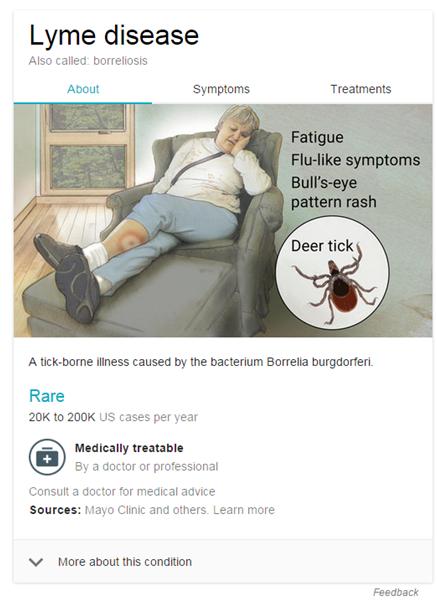Over human history we’ve moved our writing from rock to paper to servers. When we create content online, where it lives, and who owns it becomes murky. The sense of ownership is strongest when the content lives on our site surrounded by our brand, allowing us to fully control the user experience.
This is perhaps even more true for nonprofits, which are increasingly using web content to spread awareness and drive deeper engagement with supporters.
Think about where and how you are reading this sentence. Is it on paper? Online? Are you reading on a laptop or a tablet? Or, are you pinching your way through on a mobile phone? Look around this article and see whose brand shows up at the top and how the page is being monetized through ads.
A major shift is occurring as social networks and search engines work to keep users on their platforms. The reasoning behind this is clear: more engagement equals more revenue opportunities. When users stay on a platform they can be served more ads or other revenue generating activities such as surveys for which advertisers then pay.
The battle for an organization’s content will intensify as major platforms shift from user-focused to shareholder-focused development. The battle has only just begun and just a hint of what can be seen in the marketplace.
How LinkedIn networks for you content
LinkedIn, the leading professional social network, rolled out long form posts to all members this past April (https://help.linkedin.com/app/answers/detail/a_id/47445/~/long-form-posts-on-linkedin—overview). This allows longer news articles to be posted and promoted on the platform, much the way blog posts on your own site can be created. This move is similar to the way The Huffington Post brought on industry influencers to write for the site in exchange for an audience of readers.
The long form posts seem to be having great success. Floods of articles are being written and promoted on LinkedIn’s newsfeed, which of course increases engagement on their platform.
While this does seem to increase the potential audience longer form content has, the traffic is being kept on LinkedIn so there is less of a chance to move readers up an engagement ladder.
How Facebook ‘likes’ your content
Facebook is no stranger to the native content fight and has approached this battle with the EdgeRank algorithm that determines who sees what. Facebook gives extra weight to videos and photos that are hosted on its site and frequently changes how content with outbound links are weighted.
The bottom line for the algorithm is that content that keeps users engaged on Facebook performs better.
The battle is even worse for managing an organization’s Facebook pages. Native content that is posted is rewarded. However, the value of Facebook pages’ organic reach continues its predictable march towards 0%. That means posts made from these pages will soon only be seen if the page owner is willing to pay(See Whole Whale’s open letter about this: http://www.wholewhale.com/tips/open-letter-to-facebook/).
How YouTube has already won
It is no surprise that YouTube has already won the battle for your videos. (FYI: Google owns YouTube). YouTube is the number two search engine, behind Google Search. If you have video content, YouTube is the first place you need to be posting it to ensure your content can be found by its 1 billion+ users.
YouTube offers great analytics on videos and a lot of ways to control how they are embedded on third party websites. They also allow monetization partnerships with content creators.
How Google is having the last laugh
Google has been refining the Google Knowledge Graph since Summer 2012. The Google Knowledge Graph tries to answer your search query without the need to go to a website with an automatic summary answer. This helps populate automatic results to searches like “what is the weather” or “buy a watch” and other shopping searches.
While Google was able to dodge a two-year anti-trust suit in the U.S., Europe is launching a $6 billion anti-trust suit claiming these automatic results represent an unfair advantage in the market(http://money.cnn.com/2015/04/15/technology/google-europe-anti-trust-lawsuit/).
These searches give great quick information but ultimately stop the user from going to the main source of information. If a user is no longer going to a site for information, the site is losing traffic and the opportunity to sign people up for newsletters or sell services.
Nonprofits losing the content war
Communication is the cornerstone of how real change is made. Many nonprofits depend on their online content to help move people up the engagement ladder from awareness to action. Having this content removed a step further from the website means that people are becoming separated from the cause and the opportunity to act on the information shared.
Sadly, we are only at the start of the war and the opportunity for some nonprofits to build audience relationships through their content is going to get a lot worse. In February 2015, the Google Knowledge Graph extended to include 400 medical terms. For each of these terms, Google creates a summary image and sections for “about,” ‘symptoms,” “severity,” and “treatment.” (https://support.google.com/websearch/answer/2364942?p=medical_conditions&rd=1).This should immediately make you ask: Does the Knowledge Graph know best and how did they get this information?
“First, our algorithms find and analyze health-related information from high-quality sites across the web. Then, teams of doctors carefully review and refine the information and licensed medical illustrators create the visuals,” according to Google Search Help, Medical Conditions.
Information about these diseases is summarized from places like the Mayo Clinic and the Centers For Disease Control (CDC) and then curated by a team of doctors led by Dr. Kapil Parakh, M.D., MPH, Ph.D (find him on LinkedIn https://www.linkedin.com/in/kapilparakh).
The National Stroke Association, has seen monthly search traffic to the keyword “stroke” drop 36 percent since Google released the stroke knowledge graph on the search results page.
“Stroke Symptoms” Google Search, Screenshot 5/9/2015
“While the information can help raise awareness about stroke, the stroke knowledge graph image doesn’t emphasize the important message that stroke is an emergency. Visitors coming through to our full site would get the benefit of understanding the urgency of getting to the hospital and getting FAST treatment,” said Clair Diones, director of marketing at the National Stroke Association. “Additionally, they are not getting the opportunity to sign-up for supportive materials that may help them or their loved ones avoid a stroke in the future.”
How Google Cured Lyme Disease
Spoiler, Google did not cure Lyme Disease. But people searching for Lyme on Google will find information that makes Lyme seem far more curable than it actually is.
“Lyme Disease” Google search, 5/21/2015 Screenshot
“We’d have to give Google a thumbs-down on this one,” said Regina Weichert, founder of the nonprofit Lyme Nation (LymeNation.net). “On the other hand, we can’t totally blame them, because there’s a real lack of understanding about Lyme in the world right now. But if Google wants to tackle a disease as medically and politically complex as Lyme, we’d ask them to use their famous research and innovation capabilities to dig deeper.”
Some errors and omissions in Google’s Lyme Knowledge Graph are:
- Lyme is not always medically treatable;
- Lyme tests in the U.S. are roughly 46 percent accurate; and,
- Many people are misdiagnosed and become seriously ill as a result. They can go from doctor to doctor seeking help for years, often to no avail. For people lucky enough to get a correct diagnosis, studies show that 35 percent remain ill after standard antibiotic treatment, with some completely disabled by the disease. If you are in that 35 percent, there is no clear-cut medical path back to health.
The official CDC estimate is that there are 300,000 new U.S. cases of Lyme per year. Given that Lyme tests are so inaccurate, the actual number of new cases might be a lot higher. So, Google’s statistic of 20,000 to 200,000 U.S. cases per year is wrong.
Transmission occurs from more than just tick bites, including other insects, congenital transmission, and 2014 research indicates the possibility of sexual transmission.
Estimates are that 20 to 50 percent of Lyme patients never have the “bulls-eye rash” that Google lists as a symptom. Lyme causes 200 to 300 symptoms, not just the three symptoms that Google mentions.
Most of this information is readily available on the websites of Lyme nonprofits, which in this case are better informed than Google and even some doctors. Ultimately, Weichert is not a doctor. She is an advocate who has done years of research about this illness. This is the kind of research that every patient should be encouraged to do, instead of potentially relying on Google’s medical experts to have a definitive opinion, regardless of their disclaimer:
“That doesn’t mean these search results are intended as medical advice. We know that cases can vary in severity from person to person, and that there are bound to be exceptions. What we present is intended for informational purposes only — and you should always consult a healthcare professional if you have a medical concern.”
- Google Blog Post April 2015 http://googleblog.blogspot.co.uk/2015/02/health-info-knowledge-graph.html
Google sits in a wildly influential seat as its staff continues to summarize the world’s information and choose where they get that information. To see a glimpse of where Google sees this going you can watch any of their “O.K. Google” commercials frequently featuring kids asking their phones questions about the world like, “Do dogs dream?” (https://www.youtube.com/watch?v=zqKovGMx9xo) .
It’s a good thing he didn’t ask, “Do I have Lyme disease?”












